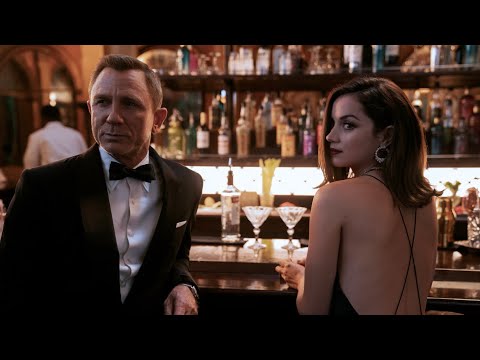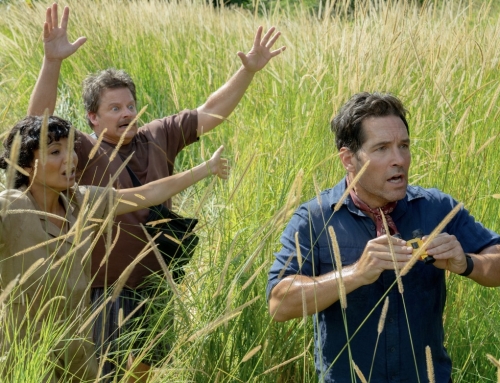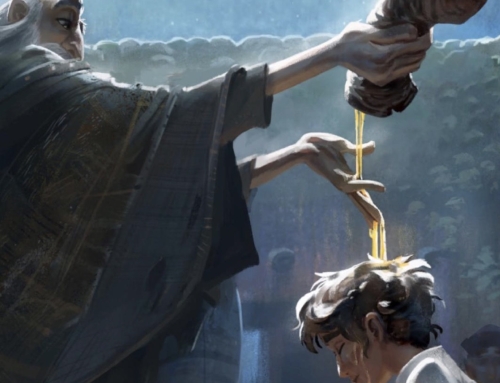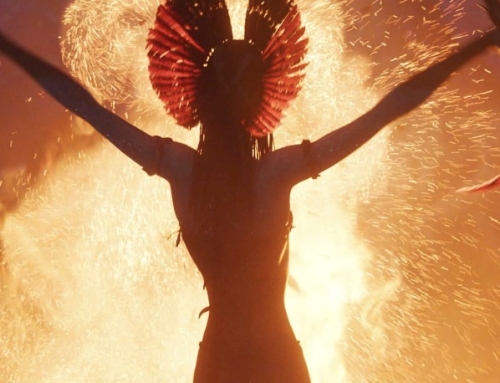No Time To Die
Where once the James Bond films played as separate adventures, linked by characters both malevolent and benign, EON Productions wanted the Daniel Craig series to unfold as a unified whole. Quantum Of Solace (2008) picked up immediately after Casino Royale (2006), which had tracked Bond’s initiation into the life of a double-O agent. Skyfall (2012) slotted into the series to reveal important aspects of Bond’s early life.
Now, the 25th film in the EON series, No Time To Die, begins in the aftermath of Spectre (2015) where the film’s conclusion saw Bond (Craig) and Madeleine Swann (Léa Seydoux) drive away in the Aston Martin DB5.
When Bond makes his first appearance in No Time To Die, he and Madeleine are in Matera, a rocky, hilltop city perched atop Southern Italy. According to series producer Michael G. Wilson, the narrative was always going to pick up with the Bond and Madeleine relationship. “The question was when,” he says.
Fellow producer Barbara Broccoli explains: “There was the debate on how we continue telling the love story and explore the themes that have become so pivotal across the Daniel Craig movies.”
“With No Time To Die there was a strong story to finish off, lots of loose ends to tie up,” says Craig. “I think we have managed to tell that story and get everything rounded up.”
Themes exploring secrets, betrayal and trust have stitched together the last four films and they propel the narrative towards its thrilling conclusion in No Time To Die. After the heartbreak he suffered with the loss of Vesper Lynd (Eva Green) in Casino Royale, his fluctuating relationship with M and MI6, and the pain inflicted by the revelations imparted by Blofeld (Christoph Waltz), Bond has taken another risk, letting down his guard with Madeleine as he bids to try and love again.
3
“If Bond is going to commit to a relationship, this throws up so many emotional challenges for him,” continues Broccoli. “So trust is the biggest theme in this movie; making an emotional commitment with someone is very difficult because of his history with attachments, and then betrayal being a big part of the break-up of those attachments.”
Though he is committing to his relationship with Madeleine, No Time To Die begins with Bond having severed his longest-lasting relationship, his employment with MI6. Associate producer Gregg Wilson notes that Bond’s retirement opened the filmmakers to a new reality.
“Bond being retired was a new place for us,” he says, “thinking what this man would be like if he didn’t have his day job. When you have devoted your life to the service, like Bond, what is the legacy that you leave behind?”
To tell this story, the filmmakers turned to visionary filmmaker Cary Joji Fukunaga (Jane Eyre, Sin Nombre, True Detective), who stepped in after the production parted ways with director Danny Boyle. Michael G. Wilson and Broccoli had long admired Fukunaga’s work as both a writer and a director and first met the filmmaker in New York shortly after the release of Spectre.
“When we met, Cary said he would love to do a Bond film at some point,” explains Broccoli, “So when Danny Boyle exited the project, we were looking for a new director and he reached out. It was amazing that he was available. His enthusiasm for the project and also his ability as a writer really came into it. It all worked out miraculously.”
Fukunaga is the first American to direct a Bond film. “I think that all Cary’s films are incredible and he is able to work in any kind of genre,” explains Michael G. Wilson, “and he is also a wonderful writer.”
4
“He is great with characters and with actors and he brings a level of complexity to everything he does. He is a very international person. He speaks several languages, is very well travelled and is also a kind of maverick. He is young and enthusiastic and he is visually extraordinary. Cary is also able to make very complicated things understandable and that fit so well with what we wanted from this story.”
Fukunaga’s introduction to the Bond stories came when he went to watch Roger Moore’s swansong, 1985’s A View To A Kill, at his local cinema. “I remember loving the finale on the Golden Gate Bridge,” he recalls. “It seemed like Bond had crossed over into my world. It was just a cool film with Roger Moore kicking ass.”
As Fukunaga’s career developed as a writer, producer and director, those memories remained and he says that he always hoped to direct a Bond film one day and, like the producers, Fukunaga was particularly excited by Bond’s emotional journey across the preceding films. “When you’re coming after Casino, Quantum, Skyfall and Spectre, you have a good idea of the arc that Bond’s character has been going through,” he says.
“For us, this film comes five years after Spectre. The world has changed a lot since then and much of our discussion was around how we make this film feel of the time, but also of the universe of Bond, which is never really specific to a time. That was part of the very first conversations we had together with the producers and with Daniel. You also want to bring something new to the story and also you want to honour all the Bond films in terms of leitmotifs and expectations.”
Chief among those expectations is adventure and the associated danger. “Every Bond film has danger,” the director adds. “You take the scariest thing you can imagine facing the world, and then you have Bond to get in front of it and stop it. And what has been interesting in Daniel’s run is the added layers that he’s brought to that character.”
“There’s complexity, there’s damage, there’s also vulnerability that’s been covered up since the first of his films when Vesper Lynd died. His decision-making is interesting
5
because of his ingenuity and also because of his flaws. I think his is a really interesting story.”
With the story taking shape under the guidance of Fukunaga and of long-time Bond screenwriters Neal Purvis and Robert Wade, the producers and Daniel Craig also invited contributions from writer and actress Phoebe Waller-Bridge (Fleabag, Killing Eve), who brought her unique take on character and story, while also maintaining what Broccoli describes as Bond’s “essential Britishness”.
“Phoebe had a big impact on the script and we love working with her,” says Broccoli. “All the writers made a contribution and Cary tried to incorporate as much of everybody’s work as possible. The story is very complicated but it is told in a very understandable manner. The revelations are fascinating.”
“The character development is very deep and the relationships are complicated yet interesting and emotional. I think the script has turned out great,” Broccoli adds.
With No Time To Die picking up the story immediately after the events of Spectre, Fukunaga says that the first part of the film “is tracking the honeymoon story of Madeleine Swann and Bond once he’s retired.”
Of course, things don’t always go to plan. “They end up going their separate ways,” Fukunaga continues. “We then pick up with him five years later and the world’s changed. The world’s moved on. The whole political landscape has changed as well.”
“There is a threat brewing that involves SPECTRE and some other outside elements, and Bond is drawn back in to helping MI6 prevent a diabolical weapon from getting out in the world. It’s a fascinating tale with such brilliant characters, new and old.”







